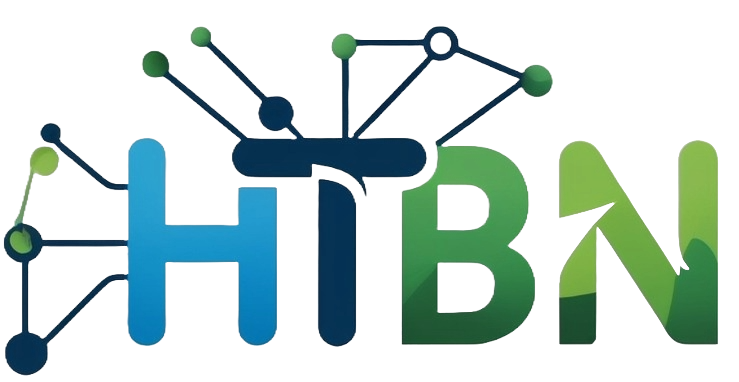Understanding the Jones Financial Plan
The Jones Financial Plan for nonprofit organizations is a strategic framework designed to help these entities meet their financial goals while remaining true to their philanthropic missions. This plan emphasizes core principles that revolve around transparency, accountability, and the effective allocation of resources. By aligning with the unique objectives of nonprofit organizations, the Jones Financial Plan aims to enhance financial sustainability and resilience in an increasingly competitive funding environment.
One of the key components of the Jones Financial Plan is its focus on long-term financial health. Nonprofits often face challenges such as fluctuating donations and limited access to traditional funding sources. The plan addresses these issues by introducing diversified revenue streams and encouraging prudent financial management practices. This ensures that organizations can sustain their operations and fulfill their missions even in times of economic uncertainty.
Another important aspect of the plan is its adaptability. The Jones Financial Plan is not a one-size-fits-all solution; instead, it is tailored to the specific needs and goals of individual nonprofit organizations. By conducting comprehensive assessments of an organization’s financial status and strategic objectives, the plan can be customized to enhance operational efficiency and effectiveness.
The incorporation of measurable objectives within the plan is crucial. Nonprofits can set financial benchmarks and performance indicators to track their progress, which helps in maintaining transparency and stakeholder confidence. Furthermore, the Jones Financial Plan encourages organizations to engage in community partnerships, fostering collaborative efforts that can lead to increased funding opportunities and programmatic support.
Ultimately, the Jones Financial Plan serves as a foundational tool for nonprofits striving for sustainability and impact. It not only charts a course for financial stability but also reinforces the commitment of these organizations to their missions. Understanding its key features and implications will be vital as we further explore its applications in subsequent sections.
Implementing the Jones Financial Plan
Implementing the Jones Financial Plan for nonprofit organizations requires a systematic approach that addresses key financial aspects of the organization. The first step is to conduct a thorough assessment of the current financial health of the organization. This involves reviewing financial statements, evaluating cash flow, and analyzing debt levels and reserves. Understanding the baseline will help identify strengths and weaknesses, providing a foundation for effective financial planning.
Once the financial health is evaluated, the next step is to identify potential funding sources. Nonprofit organizations often rely on diverse revenue streams, including grants, donations, and fundraising events. Researching and establishing relationships with potential funders can enhance financial stability. By leveraging networks and community partnerships, organizations can increase their fundraising capabilities and explore new opportunities for support.
Budgeting techniques also play a critical role in implementing the Jones Financial Plan. A well-structured budget helps nonprofit organizations allocate resources effectively while ensuring that expenditures align with strategic goals. Utilizing tools such as zero-based budgeting or participatory budgeting can encourage team collaboration and engagement in the financial planning process. Teams should be encouraged to take ownership of their budgets, fostering a culture of accountability.
Engaging stakeholders is essential for ensuring buy-in when implementing the Jones Financial Plan. It is crucial to communicate the financial plan’s objectives and benefits to all relevant parties, including board members, staff, and volunteers. Regular updates and opportunities for feedback can help maintain a transparent process, encouraging stakeholders to be active participants in achieving the organization’s financial goals.
Real-world examples of successful implementations of the Jones Financial Plan serve as valuable learning tools. Case studies showcasing effective strategies and outcomes can provide inspiration and transferable insights. By adapting these methods to meet specific organizational needs, nonprofits can enhance their financial health while achieving their mission more effectively.
Challenges and Solutions in the Jones Financial Plan
Implementing the Jones Financial Plan for nonprofit organizations can present a variety of challenges, particularly due to the unique nature of nonprofit funding and operations. One of the primary obstacles is the constraint of limited resources, which affects both human capital and financial assets. Many nonprofits operate on tight budgets, which can hinder their ability to fully adopt comprehensive financial strategies, including the Jones Financial Plan. Allocating sufficient resources for training and implementation can become a hurdle, as nonprofits must balance their operational priorities with financial planning needs.
Another significant challenge lies within the regulatory constraints that govern nonprofit organizations. Compliance with federal and state regulations can complicate financial planning efforts. Nonprofits must navigate various financial reporting requirements and can face penalties for non-compliance. This added layer of complexity can deter organizations from fully committing to the Jones Financial Plan, as they may perceive it as an additional administrative burden rather than a strategic tool.

Fluctuating income streams present yet another challenge for nonprofits employing the Jones Financial Plan. Many nonprofit organizations rely on donations, grants, and fundraising events, which can be unpredictable. This variability can complicate financial forecasting and planning, making it difficult for nonprofits to maintain stable budgets or plan effectively for future projects.
To overcome these challenges, it is crucial for nonprofits to adopt strategic financial forecasting practices. They should cultivate diversified income sources to mitigate the risks associated with income fluctuations. Utilizing scenario planning can aid in preparing for various financial outcomes, allowing nonprofits to set more realistic goals. Additionally, seeking expert consultations and leveraging testimonials from organizations that have successfully navigated these challenges can provide practical insights. By systematically addressing obstacles with proactive strategies, nonprofits can enhance their financial resilience and effectively implement the Jones Financial Plan.
Measuring Success with the Jones Financial Plan
Effectively measuring the success of the Jones Financial Plan for nonprofit organizations is crucial for ensuring that the organization not only meets its immediate financial goals but also secures its long-term sustainability and impact. Key performance indicators (KPIs) play an essential role in this evaluation process, offering tangible metrics to assess various facets of financial health and organizational effectiveness.
One of the primary KPIs to monitor is financial stability. This includes tracking metrics such as operating reserves, cash flow, and overall budget adherence. A well-structured financial plan should maintain a sufficient operating reserve to manage unforeseen circumstances while allowing flexibility within the budget. Additionally, regular monitoring of cash flow will help identify potential shortfalls early, enabling nonprofits to take corrective actions before issues arise.
Growth in donations serves as another vital indicator of success. By analyzing trends in fundraising campaigns, the organization can assess the effectiveness of its strategies. Tools such as donor management software can aid in segmenting donor demographics, which can help tailor outreach efforts and improve overall fundraising efficacy. Tracking donor retention rates also provides insight into the loyalty and engagement of supporters.
Impact metrics are equally important, as they reflect the organization’s effectiveness in fulfilling its mission. Nonprofits should develop a framework for measuring social impact, employing qualitative and quantitative methods. Surveys, testimonials, and community feedback can provide rich context to the statistical data, portraying a holistic view of the organization’s influence.
Regular assessment and adjustment of the Jones Financial Plan are essential to adapt to changing circumstances and stakeholder needs. Utilizing financial dashboards and reporting tools can simplify data compilation and presentation, allowing leaders to communicate outcomes clearly to stakeholders and the community. This proactive approach not only ensures transparency but also reinforces trust, ultimately enhancing the organization’s credibility and capability to fulfill its mission effectively.
May Be You Also Read

